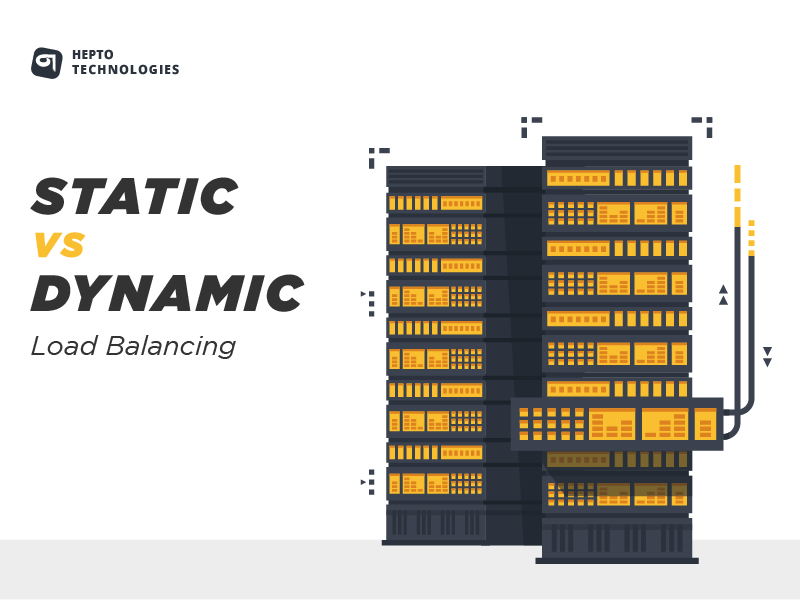Static vs Dynamic Load Balancing
Load balancing is the process of distributing network traffic across your multiple computer network or servers to ensure that the system does not get overloaded and all requests are handled easily and efficiently. A load balancer is a hardware device or software platform that acts as a reverse proxy and distributes network or application traffic across a number of servers to prevent single servers from becoming overloaded.
What is a Load Balancing?
A load-balancing algorithm (an algorithm is a set of predefined rules) is a logic that a load balancer uses to distribute network traffic between servers. Load Balancing ensures no single server bears too much demand and load balancing is a key component of highly-available infrastructures used to improve the performance and reliability of websites or servers, applications, databases and other services by distributing the workload across multiple servers. For example, if you have four computers, out of which two are hard at work while the other two are idle, the load balancing solution helps to redistribute the workload between the four machines to ensure that they deliver the results faster. In this blog let us discuss the static vs dynamic loading strategies.
Benefits of Load Balancing:
- Manage Traffic Flow
- Increase Efficiency
- Eliminate System Failure
- Update Without Downtime
- Predictive Analysis
- Security
- Scalability
How does Load Balancer Work?
A load balancer functions as a reverse proxy that gives the client a virtual IP address (VIP) that represents the application. The client connects to the virtual IP address, and the load balancer determines whether the connection should be forwarded to a certain application instance on a server using its algorithms. The load balancer manages and monitors it for the duration of the connection. A load balancer may be a virtualized instance running on specialized hardware, or a software process and incorporated into application delivery controllers (ADCs) designed to more broadly improve the performance.
What are Load Balancing Algorithms?
Effective load balancers determine which device is best able to process load balancing that needs algorithms programmed to distribute loads in a specific approach. Load Balancing can be classified into two types based on the behaviour of the algorithm:
- Static Load Balancing
- Dynamic Load Balancing
Static Load Balancing:
The static load balancing approach is achieved by providing prior information about the system is the method of dividing the incoming load on a server using algorithms that have prior information about the existing servers in the distributed network. Static load balancing schemes have a pre-defined load schedule that determines a fixed amount of load that can be shed on other systems. Static load balancing is designed for the system with low fluctuation in incoming load. In this load balancing traffic is equally divided among the servers. Static load balancing requires deeper information about available system resources and does not require real-time communication with the servers. In static load balancing, the allocated load cannot be retransferred to other servers during runtime.
Static Load Balancing Algorithms:
- Round robin
- Weighted round-robin
- IP hash
Dynamic Load Balancing:
Dynamic Load Balancing modes use node performance information to make load balancing decisions and it is a more versatile scheme of load balancing which can dynamically identify the amount of load that needs to be shed during runtime and which system should bear the load. Dynamic load balancing is designed for the system with high fluctuation in incoming load. In this load balancing traffic is dynamically divided among the servers. Dynamic load balancing requires real-time communication actively with the servers and does not necessarily need deeper information about system resources beforehand. In the dynamic load balancing, the allocated load can be retransferred among servers to reduce the underutilization of resources.
Dynamic Load Balancing Algorithms:
- Least connection
- Weighted least connection
- Weighted response time
- Resource-based
Final Thoughts:
The load balancing increases the responsiveness and availability of applications or websites for users by ensuring that no single server bears too much strain and evenly disperses the load. A load balancer is a must for a website that is growing and starting to attract a lot of people. Load balancing helps you grow without having to worry about your server and its capacities and it distributes a collection of tasks over multiple computing units to make the entire process easier to complete and much more efficient. This will help you choose the perfect plan for your specific requirements and avail the best benefits of load balancing. To know more about the other web development categories and to choose the right option for your business, visit our blogs Category.
